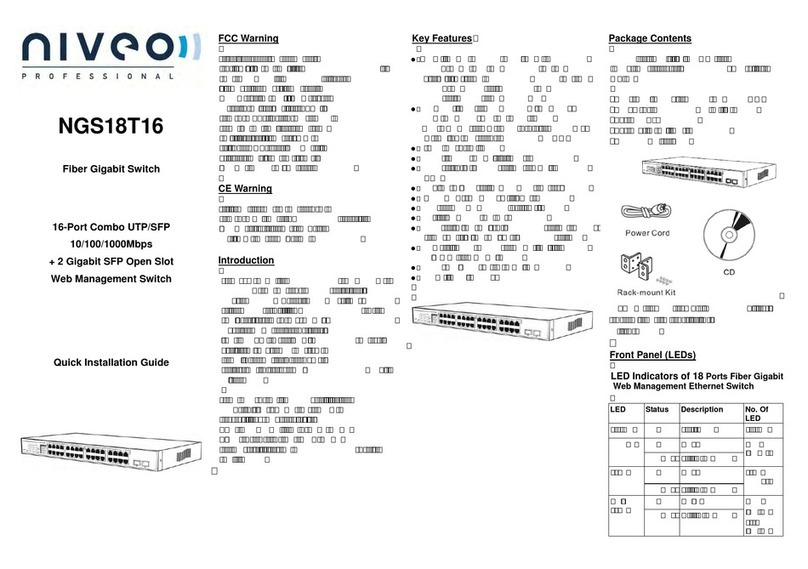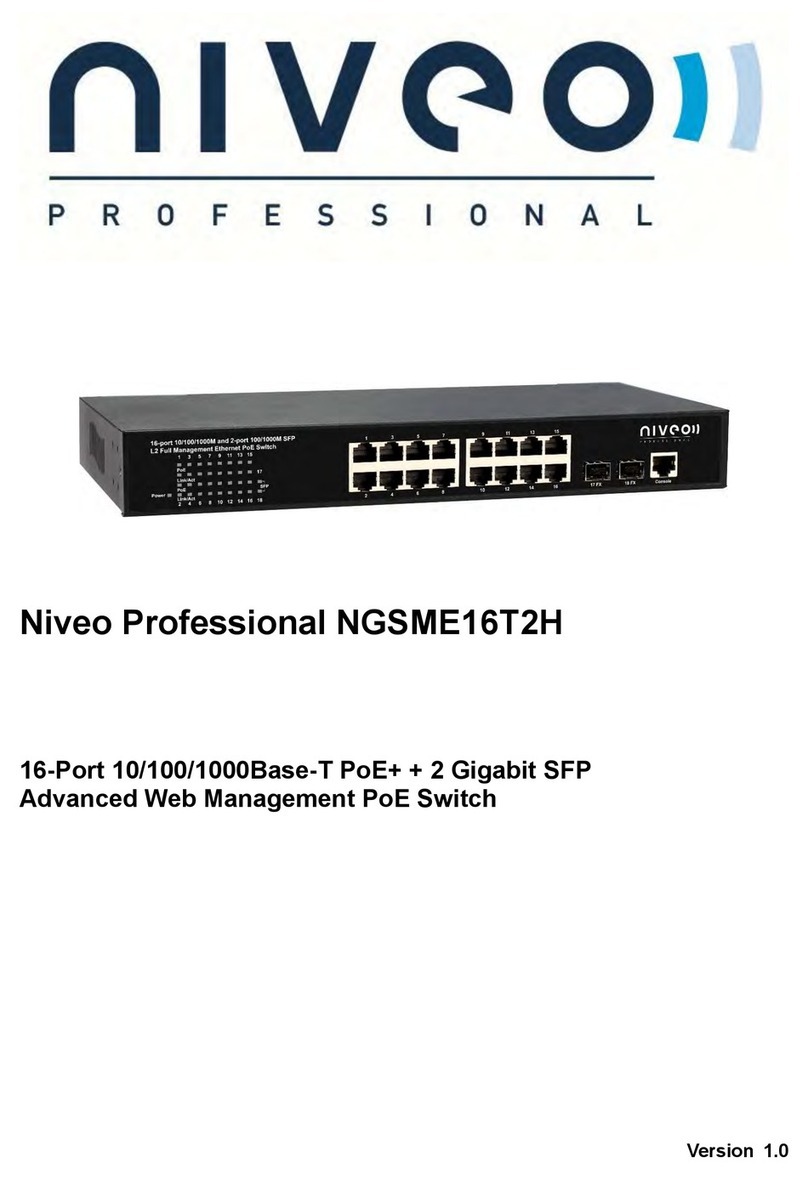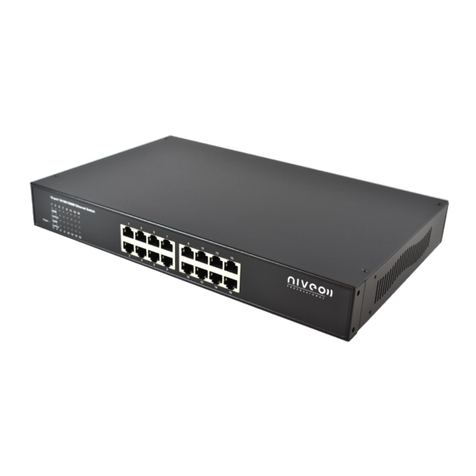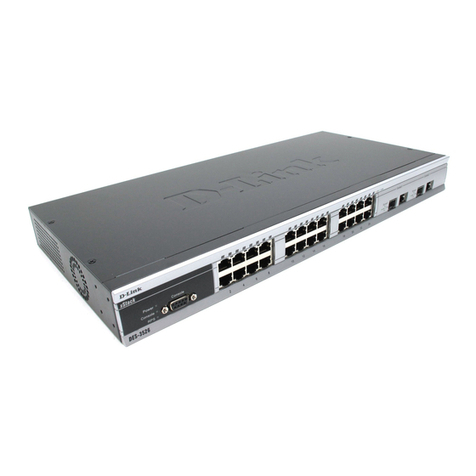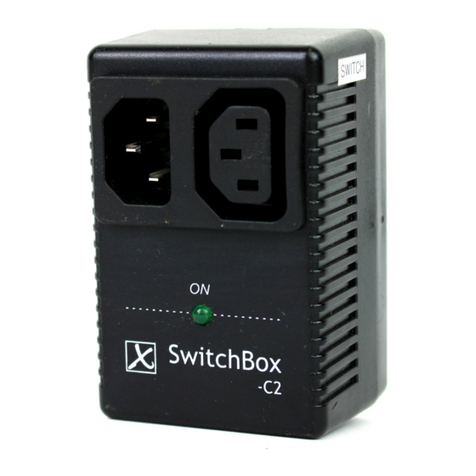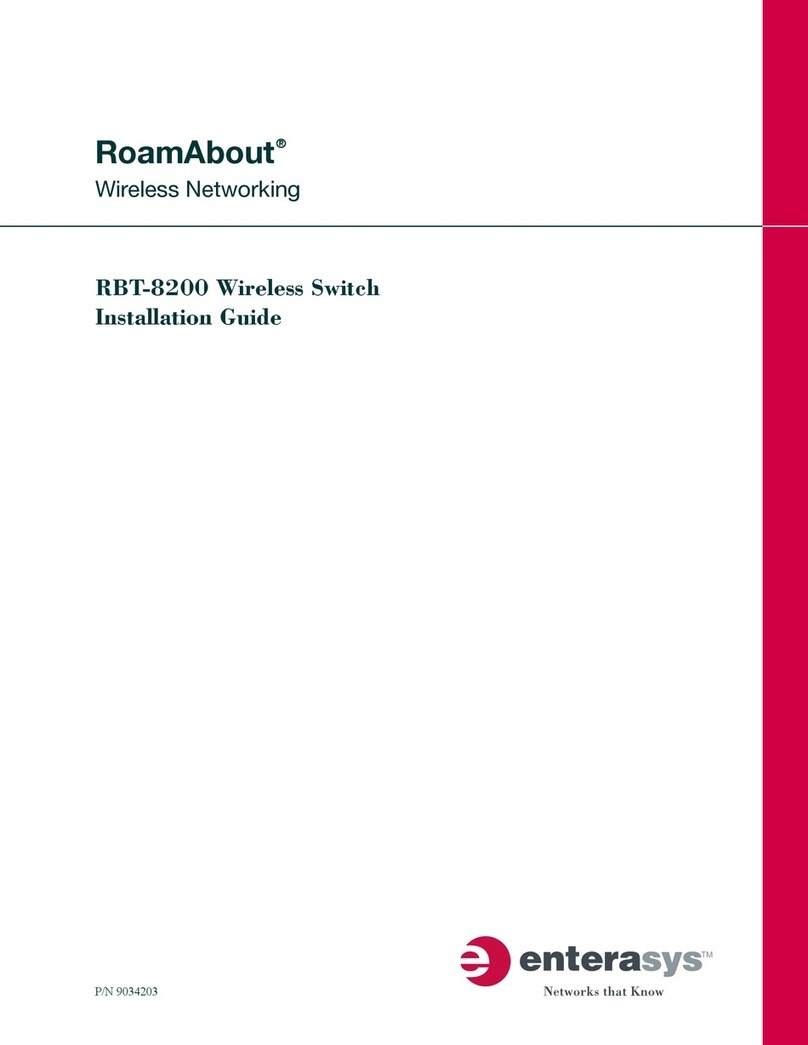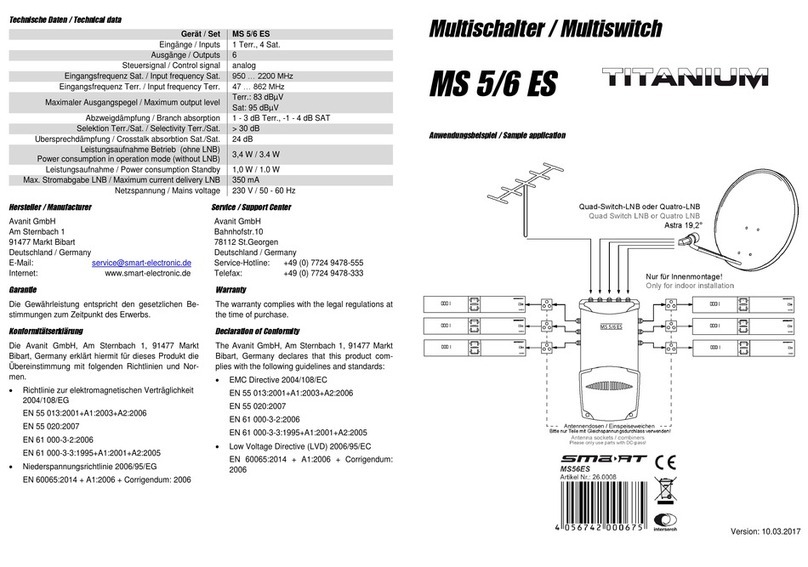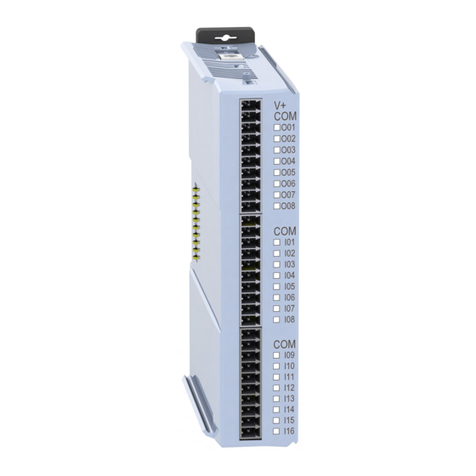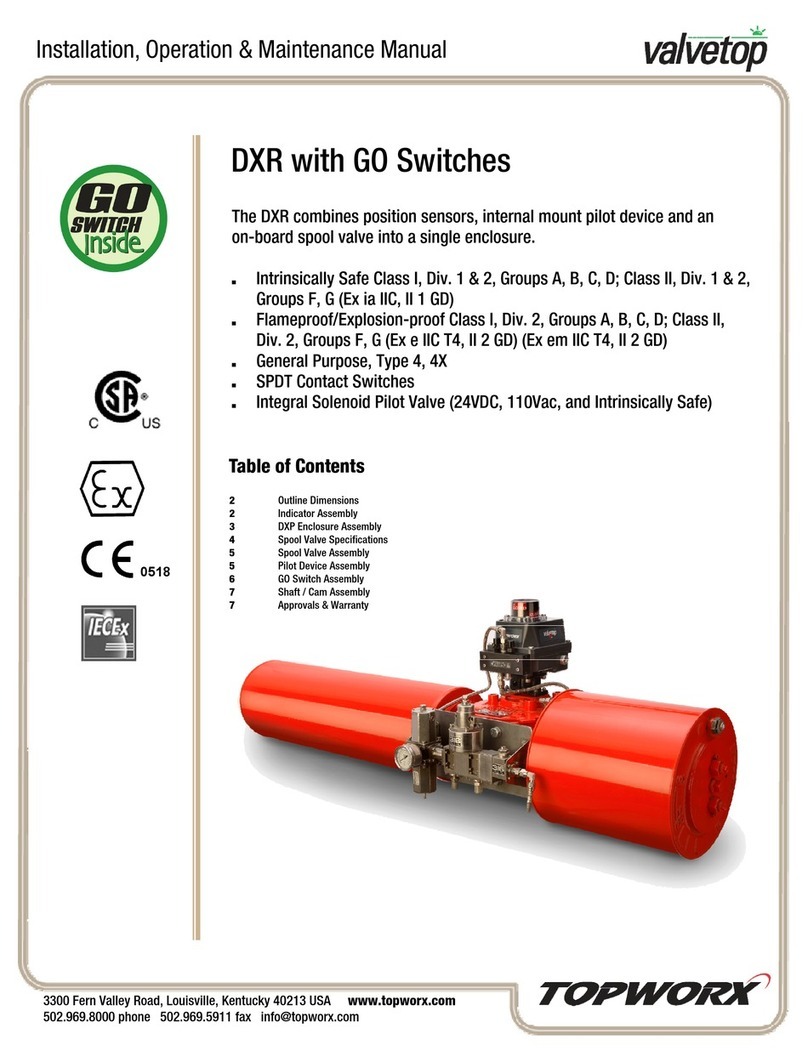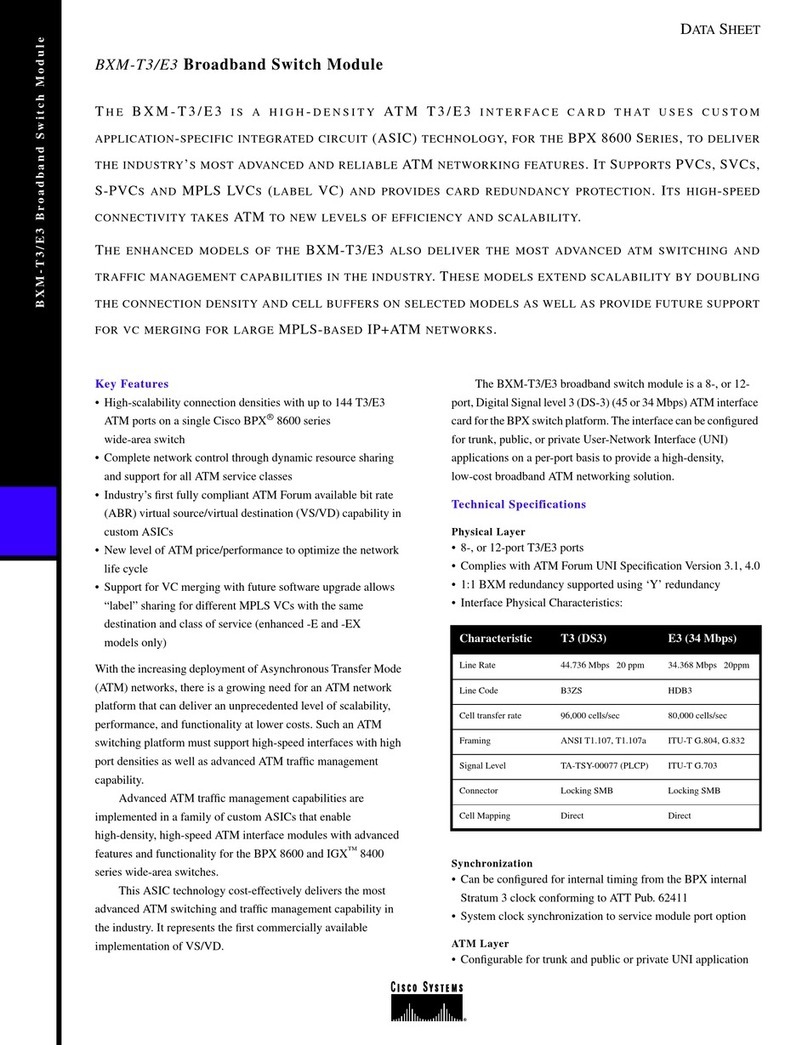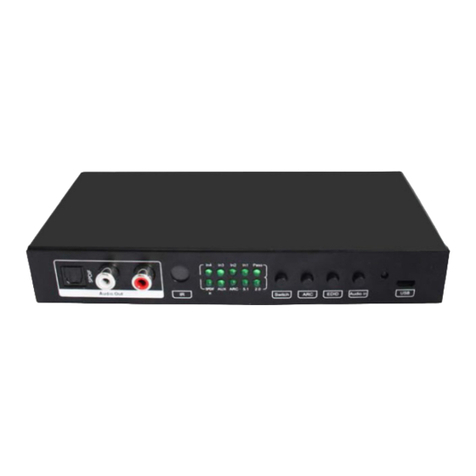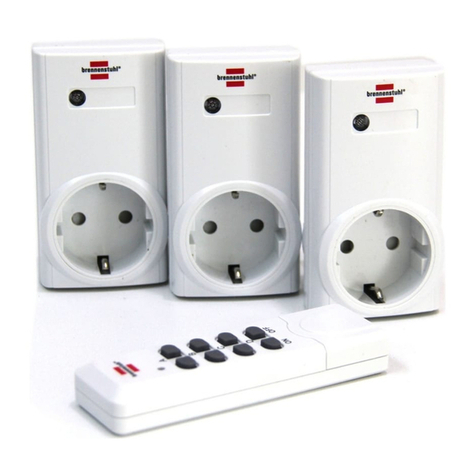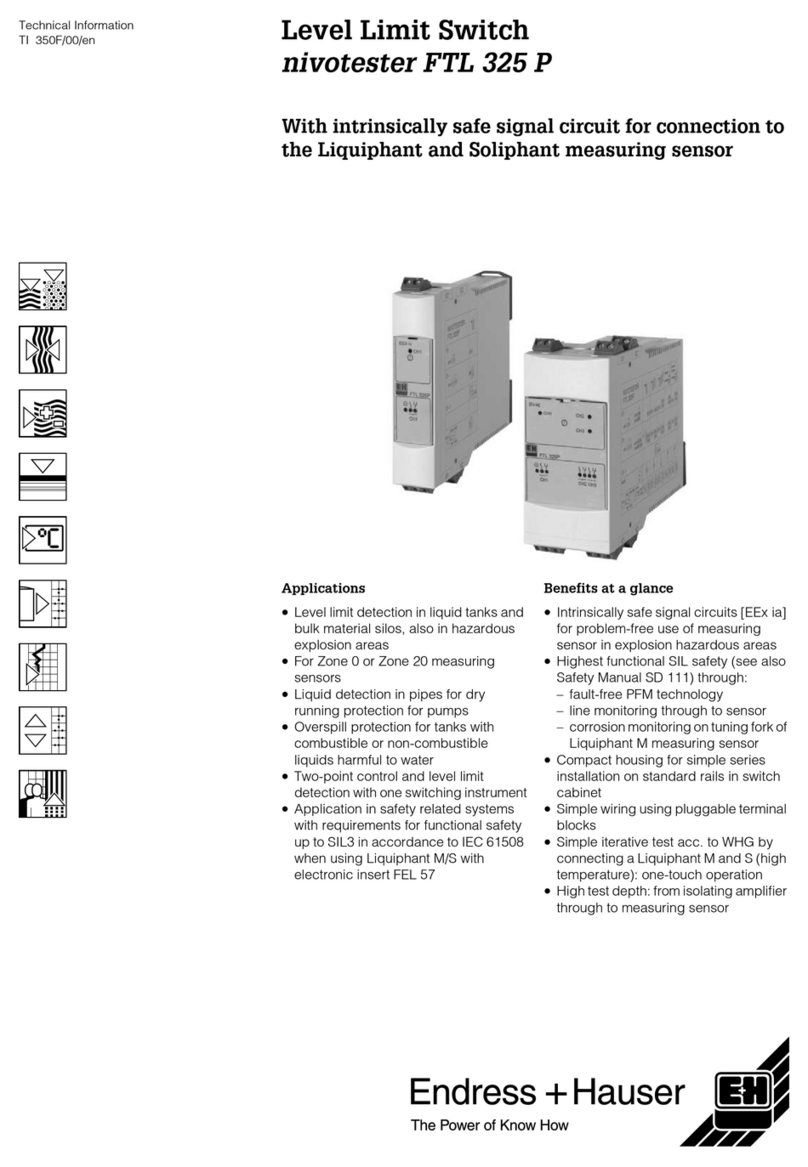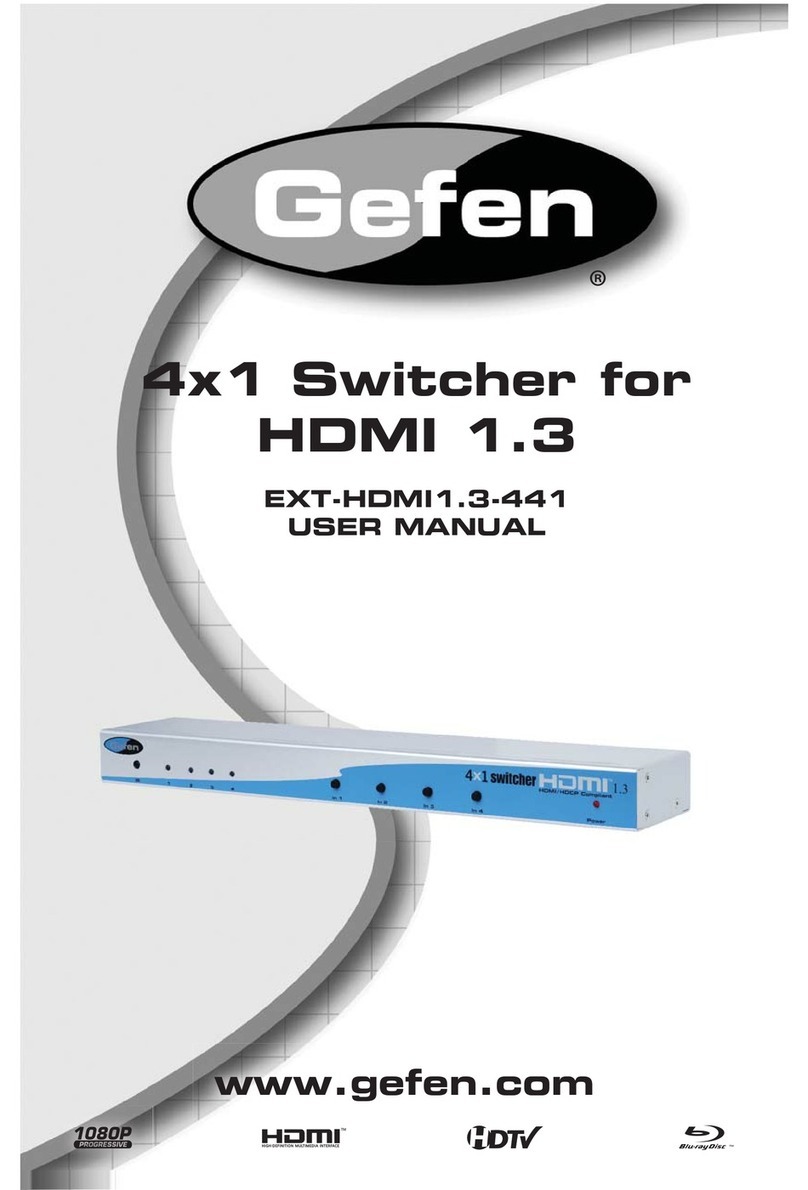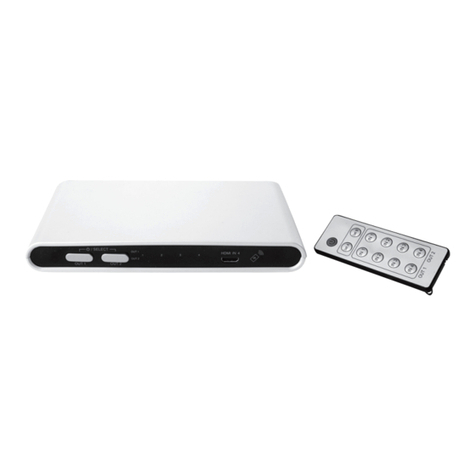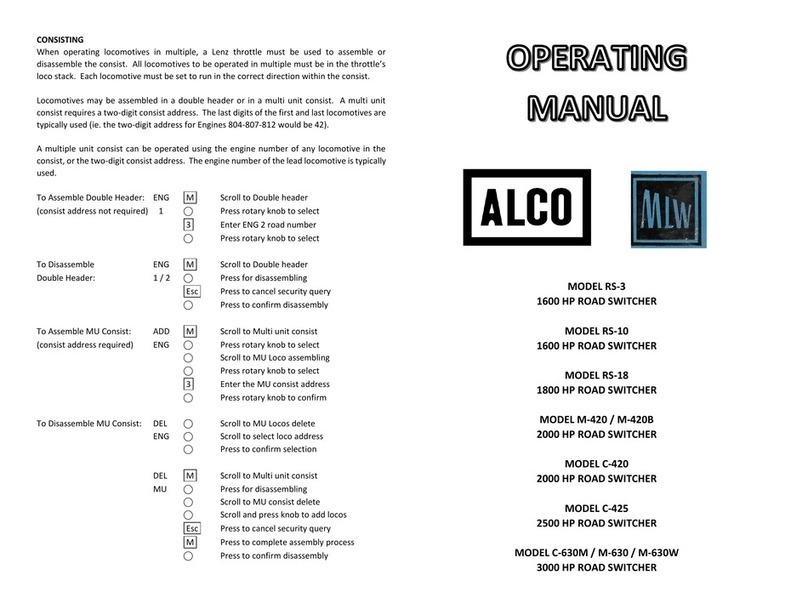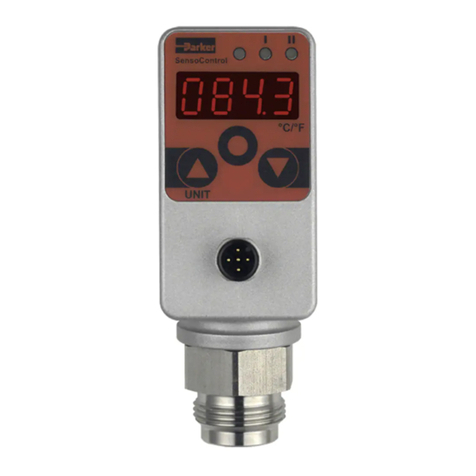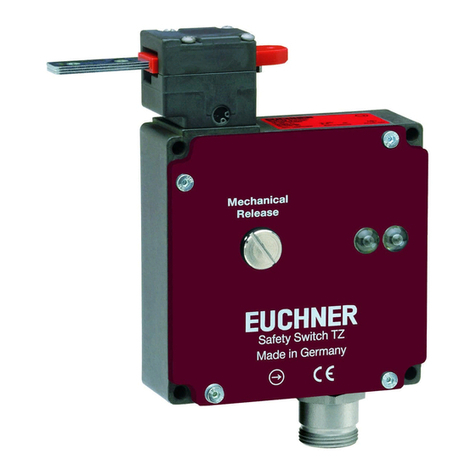Niveo Professional NGSME16T2H-AV User manual

Version 2.2
NGSME16T2H / NGSME16T2H-AV
16-Port 10/100/1000Base-T(X) + 2 Gigabit SFP Ports
Layer 2+ Full Management PoE+ Switch
User Manual

FCC/CE Mark Warning
User Manual. NGSME16T2H 2
FCC Warning
This Equipment has been tested and found to comply with the limits for a Class-A digital
device, pursuant to Part 15 of the FCC rules. These limits are designed to provide
reasonable protection against harmful interference in a residential installation. This
equipment generates, uses, and can radiate radio frequency energy. It may cause harmful
interference to radio communications if the equipment is not installed and used in
accordance with the instructions. However, there is no guarantee that interference will not
occur in a particular installation. If this equipment does cause harmful interference to radio or
television reception, which can be determined by turning the equipment off and on, the user
is encouraged to try to correct the interference by one or more of the following measures:
Reorient or relocate the receiving antenna.
Increase the separation between the equipment and receiver.
Connect the equipment into an outlet on a circuit different from that to which the
receiver is connected.
Consult the dealer or an experienced radio/TV technician for help.
CE Mark Warning
This is a Class-Aproduct. In a domestic environment this product may cause radio
interference in which case the user may be required to take adequate measures.

Table of Contents
User Manual.NGSME16T2H 3
Table of Contents
Before Starting ..........................................................................................................................10
Intended Readers...................................................................................................................11
Icons for Note, Caution, and Warning ..................................................................................11
Product Package Contents ...................................................................................................12
Chapter 1: Product Overview.................................................................................................13
1.1. Product Brief Description...............................................................................................14
1.2. Product Specification.....................................................................................................15
1.3. Hardware Description.....................................................................................................18
1.4. Hardware Installation......................................................................................................19
Chapter 2: Preparing for Management ..................................................................................20
2.1. Preparation for Serial Console.......................................................................................21
2.2. Preparation for Web Interface........................................................................................23
2.3. Preparation for Telnet/SSH Interface.............................................................................25
Chapter 3: Web Management.................................................................................................27
3.1. Web Management - Configure........................................................................................28
3.1.1. Configuration - System ............................................................................................30
3.1.1.1. System - Information .........................................................................................30
3.1.1.2. System - IP .........................................................................................................31
3.1.1.3. System - NTP......................................................................................................35
3.1.1.4. System - Time.....................................................................................................36
3.1.1.5. System - Log ......................................................................................................38
3.1.2. Configuration - Green Ethernet ...............................................................................39
3.1.2.1. Green Ethernet - Port Power Savings...............................................................39
3.1.3. Configuration - Ports................................................................................................41
3.1.4. Configuration - DHCP...............................................................................................43
3.1.4.1. DHCP - Server ....................................................................................................43
3.1.4.1.1. DHCP - Server - Mode..................................................................................43
3.1.4.1.2. DHCP - Server - Excluded IP.......................................................................45
3.1.4.1.3. DHCP - Server - Pool ...................................................................................46
3.1.4.2. DHCP - Snooping...............................................................................................48
3.1.4.3. DHCP - Relay......................................................................................................49
3.1.5. Configuration - Security...........................................................................................51
3.1.5.1. Security - Switch - Users...................................................................................51
3.1.5.2. Security - Switch - Privilege Level ....................................................................53
3.1.5.3. Security - Switch - Authentication Method.......................................................55

Table of Contents
User Manual.NGSME16T2H 4
3.1.5.4. Security - Switch - SSH......................................................................................56
3.1.5.5. Security - Switch - HTTPS .................................................................................57
3.1.5.6. Security - Switch - Access Management ..........................................................58
3.1.5.7. Security - Switch - SNMP...................................................................................59
3.1.5.7.1. Security - Switch - SNMP - System.............................................................59
3.1.5.7.2. Security - Switch - SNMP - Trap..................................................................63
3.1.5.7.3. Security - Switch - SNMP - Community......................................................65
3.1.5.7.4. Security - Switch - SNMP - User .................................................................66
3.1.5.7.5. Security - Switch - SNMP - Groups.............................................................68
3.1.5.7.5. Security - Switch - SNMP - Views ...............................................................69
3.1.5.7.6. Security - Switch - SNMP - Access.............................................................70
3.1.5.8. Security - Switch - RMON..................................................................................71
3.1.5.8.1. Security - Switch - RMON - Statistics.........................................................71
3.1.5.8.2. Security - Switch - RMON - History ............................................................72
3.1.5.8.3. Security - Switch - RMON - Alarm...............................................................73
3.1.5.8.4. Security - Switch - RMON - Event...............................................................75
3.1.5.9. Security - Network - Limit Control ....................................................................76
3.1.5.10. Security - Network - NAS (Network Access Server).......................................79
3.1.5.11. Security - Network - ACL..................................................................................90
3.1.5.11.1. Security - Network - ACL - Ports...............................................................90
3.1.5.11.2. Security - Network - ACL - Rate Limiter....................................................92
3.1.5.11.3. Security - Network - ACL - Access Control List.......................................93
3.1.5.12. Security - Network - IP Source Guard...........................................................111
3.1.5.12.1. Security - Network - IP Source Guard - Configuration..........................111
3.1.5.12.2. Security - Network - IP Source Guard - Static Table..............................112
3.1.5.13. Security - Network - ARP Inspection.............................................................113
3.1.5.13.1. Security - Network - ARP Inspection - Port Configuration....................113
3.1.5.13.2. Security - Network - ARP Inspection - VLAN Configuration .................115
3.1.5.13.3. Security - Network - ARP Inspection - Static Table................................116
3.1.5.13.4. Security - Network - ARP Inspection - Dynamic Table ..........................117
3.1.5.3. Security - AAA..................................................................................................119
3.1.5.3.1. Security - AAA - RADIUS...........................................................................119
3.1.5.3.2. Security - AAA - TACACS+........................................................................122
3.1.6. Configuration - Aggregation..................................................................................124
3.1.6.1. Aggregation - Static.........................................................................................124
3.1.6.2. Aggregation - LACP.........................................................................................126
3.1.7. Configuration - Loop Protection............................................................................128

Table of Contents
User Manual.NGSME16T2H 5
3.1.8. Configuration - Spanning Tree ..............................................................................130
3.1.8.1. Spanning Tree - Bridge Settings.....................................................................130
3.1.8.2. Spanning Tree - MSTI Mapping.......................................................................132
3.1.8.3. Spanning Tree - MSTI Priorities ......................................................................134
3.1.8.4. Spanning Tree - CIST Ports.............................................................................135
3.1.8.5. Spanning Tree - MSTI Ports.............................................................................138
3.1.9. Configuration - IPMC Profile..................................................................................140
3.1.9.1. IPMC Profile - Profile Table..............................................................................140
3.1.9.2. IPMC Profile - Address Entry...........................................................................142
3.1.10. Configuration - MVR.............................................................................................143
3.1.11. Configuration - IPMC............................................................................................147
3.1.11.1. IPMC - IGMP Snooping...................................................................................147
3.1.11.1.1. IPMC - IGMP Snooping - Basic Configuration........................................147
3.1.11.1.2. IPMC - IGMP Snooping - VLAN Configuration .......................................149
3.1.11.1.3. IPMC - IGMP Snooping - Port Group Filtering........................................152
3.1.11.2. IPMC - MLD Snooping....................................................................................153
3.1.11.2.1. IPMC - MLD Snooping - Basic Configuration.........................................153
3.1.11.2.2. IPMC - MLD Snooping - VLAN Configuration.........................................155
3.1.11.2.3. IPMC - MLD Snooping - Port Group Filtering.........................................158
3.1.12. Configuration - LLDP............................................................................................159
3.1.12.1. LLDP - LLDP...................................................................................................159
3.1.12.2. LLDP - LLDP-MED..........................................................................................162
3.1.13. Configuration - PoE..............................................................................................169
3.1.14. Configuration - MAC Table...................................................................................173
3.1.15. Configuration - VLANs .........................................................................................175
3.1.16. Configuration - Private VLAN ..............................................................................180
3.1.16.1. Private VLAN - Membership.......................................................................180
3.1.16.2. Private VLAN - Port Isolation.....................................................................182
3.1.17. Configuration - VCL..............................................................................................183
3.1.17.1. VCL - MAC-based VLAN ................................................................................183
3.1.17.2. VCL - Port-based VLAN .................................................................................185
3.1.17.2.1. VCL - Port-based VLAN - Protocol to Group..........................................185
3.1.17.2.2. VCL - Port-based VLAN - Group to VLAN ..............................................187
3.1.17.3. VCL - IP Subnet-based VLAN ........................................................................188
3.1.18. Configuration - Voice VLAN.................................................................................190
3.1.18.1. Voice VLAN - Configuration...........................................................................190
3.1.18.2. Voice VLAN - OUI ...........................................................................................192

Table of Contents
User Manual.NGSME16T2H 6
3.1.19. Configuration - QoS..............................................................................................193
3.1.19.1. QoS - Port Classification...............................................................................193
3.1.19.2. QoS - Port Policing ........................................................................................196
3.1.19.3. QoS - Port Scheduler.....................................................................................197
3.1.19.4. QoS - Port Shaping........................................................................................201
3.1.19.5. QoS - Port Tag Remarking.............................................................................205
3.1.19.6. QoS - Port DSCP ............................................................................................208
3.1.19.7. QoS - DSCP-Based QoS ................................................................................210
3.1.19.8. QoS - DSCP Translation.................................................................................211
3.1.19.9. QoS - DSCP Classification.............................................................................213
3.1.19.10. QoS - QoS Control List................................................................................214
3.1.19.11. QoS - Storm Control.....................................................................................216
3.1.20. Configuration - Mirroring .....................................................................................217
3.1.21. Configuration - UPnP ...........................................................................................219
3.1.22. Configuration - GVRP...........................................................................................220
3.1.22.1. GVRP - Global Config ....................................................................................220
3.1.22.2. GVRP - Port Config ........................................................................................221
3.1.23. Configuration - sFlow...........................................................................................222
3.2. Web Management - Monitor .........................................................................................225
3.2.1. Monitor - System ....................................................................................................225
3.2.1.1. System - Information .......................................................................................225
3.2.1.2. System - CPU Load..........................................................................................227
3.2.1.3. System - IP Status............................................................................................228
3.2.1.4. System - Log ....................................................................................................230
3.2.1.5. System - Detailed Log......................................................................................231
3.2.3. Monitor - Green Ethernet .......................................................................................232
3.2.3.1. Green Ethernet - Port Power Savings Status.................................................232
3.2.4. Monitor - Ports........................................................................................................233
3.2.4.1. Ports - Traffic Overview...................................................................................233
3.2.4.2. Ports - QoS Statistics ......................................................................................234
3.2.4.3. Ports - QCL Status ...........................................................................................235
3.2.4.4. Ports - Detailed Statistics................................................................................237
3.2.5. Monitor - DHCP.......................................................................................................240
3.2.5.1. DHCP - Server ..................................................................................................240
3.2.5.1.1. DHCP - Server - Statistics.........................................................................240
3.2.5.1.2. DHCP - Server - Binding............................................................................242
3.2.5.1.3. DHCP - Server - Declined IP......................................................................243

Table of Contents
User Manual.NGSME16T2H 7
3.2.5.2. DHCP - Snooping Table ...................................................................................244
3.2.5.3. DHCP - Relay Statistics ...................................................................................246
3.2.5.4. DHCP - Detailed Statistics...............................................................................248
3.2.6. Monitor - Security...................................................................................................250
3.2.6.1. Security - Access Management Statistics......................................................250
3.2.6.2. Security - Network............................................................................................251
3.2.6.2.1. Security - Network - Port Security - Switch..............................................251
3.2.6.2.2. Security - Network - Port Security - Port..................................................253
3.2.6.2.3. Security - Network - NAS - Switch............................................................254
3.2.6.2.5. Security - Network - NAS - Port ................................................................256
3.2.6.2.6. Security - Network - ACL Status...............................................................261
3.2.6.2.7. Security - Network - ARP Inspection........................................................263
3.2.6.2.8. Security - Network - IP Source Guard ......................................................265
3.2.6.3. Security - AAA..................................................................................................269
3.2.6.3.1. Security - AAA - RADIUS Overview ..........................................................269
3.2.6.3.2. Security - AAA - RADIUS Details ..............................................................271
3.2.6.4. Security - Switch - RMON................................................................................275
3.2.6.4.1. Security - Switch - RMON - Statistics.......................................................275
3.2.6.4.2. Security - Switch - RMON - History ..........................................................278
3.2.6.4.3. Security - Switch - RMON - Alarm.............................................................280
3.2.6.4.4. Security - Switch - RMON - Events...........................................................282
3.2.7. Monitor - LACP .......................................................................................................283
3.2.7.1. LACP - System Status......................................................................................283
3.2.7.2. LACP - Port Status...........................................................................................284
3.2.7.3. LACP - Port Statistics......................................................................................285
3.2.8. Monitor - Loop Protection......................................................................................286
3.2.9. Monitor - Spanning Tree.........................................................................................287
3.2.9.1. Spanning Tree - Bridge Status........................................................................287
3.2.9.2. Spanning Tree - Port Status ............................................................................288
3.2.9.3. Spanning Tree - Port Statistics .......................................................................289
3.2.10. Monitor - MVR.......................................................................................................290
3.2.10.1. MVR - Statistics..............................................................................................290
3.2.10.2. MVR - MVR Channel Groups .........................................................................291
3.2.10.3. MVR - MVR SFM Information.........................................................................292
3.2.11. Monitor - IPMC ......................................................................................................294
3.2.11.1. IPMC - IGMP Snooping...................................................................................294
3.2.11.1.1. IPMC - IGMP Snooping - Status..............................................................294

Table of Contents
User Manual.NGSME16T2H 8
3.2.11.1.2. IPMC - IGMP Snooping - Groups Information........................................296
3.2.11.1.3. IPMC - IGMP Snooping - IPv4 SFM Information.....................................297
3.2.11.2. IPMC - MLD Snooping....................................................................................299
3.2.11.2.1. IPMC - MLD Snooping - Status................................................................299
3.2.11.2.2. IPMC - MLD Snooping - Groups Information .........................................301
3.2.11.2.3. IPMC - MLD Snooping - IPv6 SFM Information ......................................302
3.2.12. Monitor - LLDP......................................................................................................304
3.2.12.1. LLDP - Neighbours.........................................................................................304
3.2.12.2. LLDP - LLDP-MED Neighbours......................................................................306
3.2.12.3. LLDP - PoE .....................................................................................................310
3.2.12.4. LLDP - EEE .....................................................................................................312
3.2.12.5. LLDP - Port Statistics.....................................................................................314
3.2.13. Monitor - PoE........................................................................................................316
3.2.14. Monitor - MAC Table.............................................................................................318
3.2.15. Monitor - VLANs ...................................................................................................320
3.2.15.1. VLANs - VLAN Membership...........................................................................320
3.2.15.2. VLANs - VLAN Ports ......................................................................................322
3.2.16. Monitor - sFlow.....................................................................................................324
3.3. Web Management - Diagnostics ..................................................................................326
3.3.1. Diagnostics - Ping ..................................................................................................326
3.3.2. Diagnostics - Ping6 ................................................................................................328
3.3.3. Diagnostics - VeriPHY............................................................................................330
3.4. Web Management - Maintenance.................................................................................332
3.4.1. Maintenance - Restart Device................................................................................332
3.4.2. Maintenance - Factory Defaults.............................................................................333
3.4.3. Maintenance - Software..........................................................................................334
3.4.3.1. Software - Upload.............................................................................................334
3.4.3.2. Software - Image Select...................................................................................335
3.4.4. Maintenance - Configuration .................................................................................336
3.4.4.1. Configuration - Save Startup-config...............................................................336
3.4.4.2. Configuration - Download ...............................................................................337
3.4.4.3. Configuration - Upload ....................................................................................338
3.4.4.4. Configuration - Activate...................................................................................339
3.4.4.5. Configuration - Delete......................................................................................340
Appendix A: Product Safety ...................................................................................................341
Appendix B: IP Configuration for Your PC ............................................................................342
Revision History......................................................................................................................345

Table of Contents
User Manual.NGSME16T2H 9

Before Starting
User Manual. NGSME16T2H 11
Intended Readers
This manual provides information regarding to all the aspects and functions needed to install,
configure, use, and maintain the product you’ve purchased.
This manual is intended for technicians who are familiar with in-depth concepts of networking
management and terminologies.
Icons for Note, Caution, and Warning
To install, configure, use, and maintain this product properly, please pay attention when you
see these icons in this manual:
A Note icon indicates important information which will guide you to use this
product properly.
A Caution icon indicates either a potentialfor hardware damage or data loss,
including information that will guide you to avoid these situations.
A Warning icon indicates potentialsfor property damage and personal injury.

Before Starting
User Manual.NGSME16T2H 12
Product Package Contents
Before starting install this product, please check and verify the contents of the product package,
which should include the following items:
One Network Switch
One Power Cord
One User Manual CD
One pair Rack-mount kit + 8 Screws
Note: If any item listed in this table above is missing or damaged, please contact your
distributor or retailer as soon as possible.

User Manual. NGSME16T2H 13
Chapter 1:
Product Overview
In Product Overview:
This section will give you an overview of this product, including its feature
functions and hardware/software specifications.
Product Brief Description
Product Specification
Hardware Description
Hardware Installation

Chapter 1: Product Overview
Product Brief Description
User Manual. NGSME16T2H 14
1.1. Product Brief Description
Introduction
The switch is 16-port 10 Base-T / 100 Base-TX / 1000 Base-T + 2 Gigabit SFP L2+
Management PoE Switch that is designed for small or medium network environment to
strengthen its network connection. The 16 10 Base-T / 100 Base-TX / 1000 Base-T ports
support IEEE 802.3at PoE technology, up to 30W per port and maximum 100m transmission
distance. The switch equipped with AC to DC power module to support 235W power budget
for PoE power. The switch also supports Layer 2+ full management software features. These
features are powerful to provide PoE Control, Network Control, Management, Monitor and
Security features’ requests. It is a superb choice to boost your network with better
performance, efficiency and high PoE power consumption.
IEEE 802.3at Power over Ethernet (PoE) ports
The switch features 16 IEEE 802.3at Power over Ethernet (PoE) ports supplying up to 30
watts per port. This product can convert standard 100~240V/AC power into low-voltage DC
that runs over existing LAN cable to power up IEEE 802.3at compliant network accessories.
It also features PoE awareness to verify whether the network device receive power is IEEE
802.3at compliant, or only the data will be sent through LAN cable. By adding the switch to
the existing networking, installing networking products such asAccess Points and IP
cameras can be easily managed and set up. Wireless device deployments are easily located
with available power outlets and network administrators don’t need to use heavy AC power
adapters anymore.
2 Gigabit SFP Open Slots
The switch supports 2 additional SFP open slots to uplink to servers, storage, or other
switching devices for long loop reach applications. The 2 SFP slots can support different
types, speed and distance SFP transceivers. It also supports legacy 100M SFP transceiver.
If the 100M fiber infrastructure is constructed and 100M bandwidth is enough, the 100M SFP
transceiver can be an optional choice for the legacy 100M network environment.
Full Layer 2 Management Features
The switch includes full Layer 2+ Management features. The software set includes up to 4K
802.1Q VLAN and advanced Protocol VLAN, Private VLAN, MVR…features. There are 8
physical queues Quality of Service, IPv4/v6 Multicast filtering, Rapid Spanning Tree protocol
to avoid network loop, Multiple Spanning Tree Protocol to integrate VLAN and Spanning
Tree, LACP, LLDP; sFlow, port mirroring, cable diagnostic and advanced Network Security
features. It also provides Console CLI for out of band management and SNMP, Web GUI for
in band Management.

Chapter 1: Product Overview
Product Specification
User Manual. NGSME16T2H 15
1.2. Product Specification
Interface
10 Base-T /100 Base-TX / 1000 Base-T RJ45 Ports
16
100/1000 SFP Ports
2
Console Port for CLI Management
1
System Performance
Packet Buffer
4Mb
MAC Address Table Size
8K
Switching Capacity
36Gbps
Forwarding Rate
26.78Mpps
PoE Features
IEEE 802.3 af/at
IEEE 802.3 af/at
Number of PSE Ports
16
Max. Power Budget
235W
External/Internal Power
Internal Power
Power Feeding Detecting Capability on PD
PD Alive Check
PD Classification
Power
Management
(per-port)
Enable/Disable PoE Per Port
Priority Setting Per Port
Power Level Setting Per Port
Overloading Protection
L2 Features
Auto-negotiation
Auto MDI/MDIX
Flow Control
(duplex)
802.3x (Full)
Back-Pressure (Half)
Spanning
Tree
IEEE 802.1D (STP)
IEEE 802.1w (RSTP)
IEEE 802.1s (MSTP)
VLAN
VLAN Group
4K
Tagged Based
Port-based
Link
Aggregation
IEEE 802.3ad with LACP
Static Trunk
Max. LACP Link Aggregation Group
9
Max. Port per Link Aggregation Group
8
IGMP
Snooping
IGMP Snooping v1/v2/v3
Supports 1024 IGMP groups
IGMP Static Multicast Addresses
Supports 1024 static multicast addresses
IPv6 MLD Snooping
Supports 1024 MLD groups
IPv6 MLD Snooping
Supports 1024 static multicast addresses
Querier, Immediate Leave
Storm Control (Broadcast/Multi-cast/Un-known Unicast)
Jumbo Frame Support
9.6K

Chapter 1: Product Overview
Product Specification
User Manual.NGSME16T2H 16
QoS Features
Number of priority queue
8 queues/port
Rate Limiting
Ingress
Yes, 1KBps/1pps
Egress
Yes, 1KBps/1pps
DiffServ (RFC2474 Remarking)
Scheduling (WRR, Strict, Hybrid)
CoS
IEEE 802.1p
IP ToS precedence, IP DSCP
Security
Management System User Name/Password Protection
User Privilege
Set user privilege up to 15 Level
Port Security (MAC-based)
IEEE 802.1x Port-based Access Control
ACL (L2/L3/L4)
IP Source Guard
RADIUS (Authentication, Authorization, Accounting)
TACACS+
HTTP & SSL (Secure Web)
SSH v2.0 (Secured Telnet Session)
MAC/IP Filter
Management
Command Line Interface (CLI)
Web Based Management
Telnet
Access Management Filtering
SNMP/WEB/SSH/TELNET
Firmware Upgrade via HTTP
Dual Firmware Images
Configuration Download/Upload
SNMP (v1/v2c/v3)
RMON (1,2,3,&9 groups)
DHCP (Client/Relay/Option82/Snooping)
System Event/Error Log
NTP/LLDP
Cable Diagnostics
IPv6 Configuration
Port Mirroring
One to One or Many to One
Mechanical
Power Input
100~240VAC
Dimension (H*W*D)
44*330*210 mm
LED
Power, PoE, Link/Act, SFP
System Power Consumption
15W
Operating Temperature
0~45°C
Storage Temperature
-20~80°C
Operating Humidity
5~90% (non-condensing)
Weight
2.5 KG
Certification
CE, FCC Class A

Chapter 1: Product Overview
Product Specification
User Manual.NGSME16T2H 17
Standard
IEEE 802.3 –10BaseT
IEEE 802.3u - 100BaseTX
IEEE 802.3ab - 1000BaseT
IEEE 802.3z 1000BaseSX/LX
IEEE 802.3af Power over Ethernet (PoE)
IEEE 802.3at Power over Ethernet (PoE+)
IEEE 802.3az - Energy Efficient Ethernet (EEE)
IEEE 802.3x - Flow Control
IEEE 802.1Q - VLAN
IEEE802.1v - Protocol VLAN
IEEE 802.1p - Class of Service
IEEE 802.1D - Spanning Tree
IEEE 802.1w - Rapid Spanning Tree
IEEE 802.1s - Multiple Spanning Tree
IEEE 802.3ad - Link Aggregation Control Protocol (LACP)
IEEE 802.1AB - LLDP (Link Layer Discovery Protocol)
IEEE 802.1X - Access Control

Chapter 1: Product Overview
Hardware Description
User Manual. NGSME16T2H 18
1.3. Hardware Description
This section mainly describes the hardware of Full-Management PoE switch and gives a
physical and functional overview on the certain switch.
Front Panel
The front panel of the Full-Management PoE switch consists of 16 10 Base-T / 100 Base-TX
/ 1000 Base-T RJ-45 ports and 2 gigabit uplink SFP ports. The LED Indicators are also
located on the front panel.
LED Indicators
The LED Indicators present real-time information of systematic operation status. The
following table provides description of LED status and their meaning.
LED
Color / Status
Description
No. of LEDs
Power
On
Power on
1
Link/ACT
On
Link Up
1~16
Blinking
Data Activating
PoE
On
PD is connected
1~16
Blinking without
Link/ACT LED On
PoE Budge Depleted*
1~16
SFP
On
linked to Power Device
17~18
Blinking
Data Activating
17~18
*If a new PD is connected to the PoE switch and the PoE budget is depleted, the PoE LED will
start blinking. No Power will be provided and the user must allocate PoE power manually.
Rear Panel
The rear panel of the Full-Management PoE switch contains a power switch, and an IEC
60320 plug for power supply.

Chapter 1: Product Overview
Hardware Installation
User Manual. NGSME16T2H 19
1.4. Hardware Installation
To install the Full-Management PoE switch, please place it on a large flat surface with a
power socket close by. This surface should be clean, smooth, and level. Also, please make
sure that there is enough space around the Full-Management PoE switch for RJ45 cable,
power cord and ventilation.
If you’re installing this Full-Management PoE switch on a 19-inch rack, please make sure to
use the rack-mount kit (L brackets) and screws come with the product package. All screws
must be fastened so the rack-mount kit and your product are tightly conjoined before installing
it on your 19-inch rack.
Ethernet cable Request
The wiring cable types are as below:
10 Base-T: 2-pair UTP/STP CAT. 3, 4, 5 cable, EIA/TIA-568 100-ohm (Max. 100m)
100 Base-TX: 2-pair UTP/STP CAT. 5 cable, EIA/TIA-568 100-ohm (Max. 100m)
1000 Base-T: 4-pair UTP/STP CAT. 5 cable, EIA/TIA-568 100-ohm (Max. 100m)
PoE: To delivery power properly, it is recommended to use CAT 5e and CAT 6 cable.
Ethernet cables of higher qualities can reduce the power lost during transmission.
SFP Installation
While install the SFP transceiver, make sure the SFP type of the 2 ends is the same and the
transmission distance, wavelength, fiber cable can meet your request. It is suggested to
purchase the SFP transceiver with the switch provider to avoid any incompatible issue.
The way to connect the SFP transceiver is to Plug in SFP fiber transceiver fist. The SFP
transceiver has 2 plug for fiber cable, one is TX (transmit), the other is RX (receive). Cross-
connect the transmit channel at each end to the receive channel at the opposite end.
For more information regarding to the product safety and maintenance guide, please refer to
Appendix A: Product Safety.

User Manual. NGSME16T2H 20
Chapter 2:
Preparing for Management
In Preparing for Management:
This section will guide your how to manage this product via serial console,
management web page, and Telnet/SSH interface.
The switch provides both out-of-band and in-band managements.
Out-of-band Management: You can configure the switch via RS232 console
cable without having the switch or your PC connecting to a network. Out-of-band
management provides a dedicated and secure way for switch management.
In-Band Management: In-band management allows you to manage your switch
with a web browser (such as Microsoft IE, Mozilla Firefox, or Google Chrome) as
long as your PC and the switch are connected to the same network.
Preparation for Serial Console
Preparation for Web Interface
Preparation for Telnet/SSH Interface
This manual suits for next models
1
Table of contents
Other Niveo Professional Switch manuals


